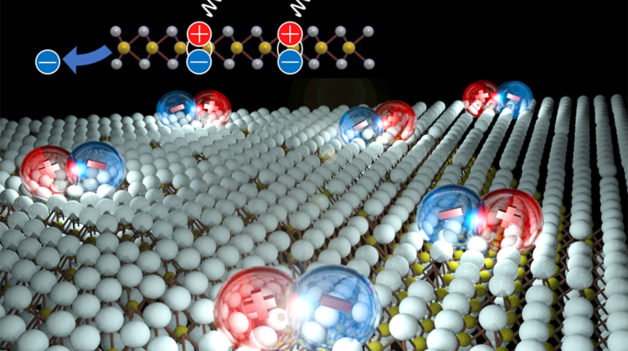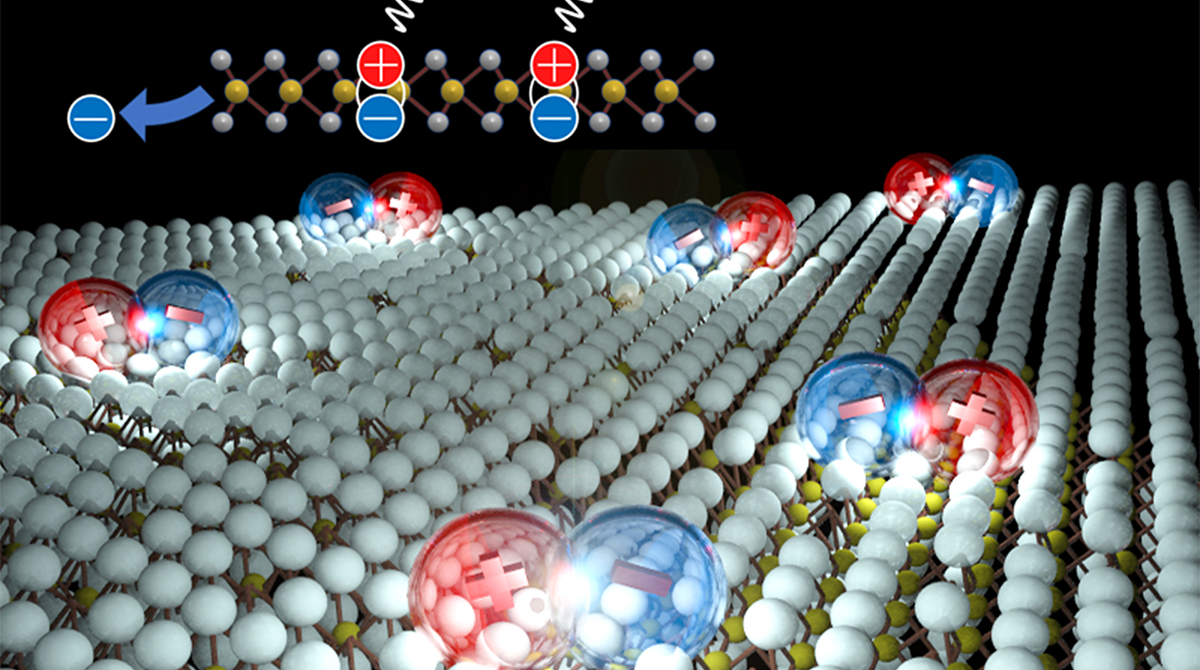
A research team led by Ali Javey of Berkeley Lab has developed a practical method that brightens TMDC semiconductors for device applications such as solar cells and lasers without having to chemically treat the materials for defects. (Credit: Der-Hsien Lien et al./Berkeley Lab)
Atomically thin semiconductors known as TMDCs (transition metal dichalcogenides) could lead to devices that operate more efficiently than conventional semiconductors in light-emitting diodes, lasers, and solar cells. But these materials are hard to make without defects that dampen their performance.
Now, a study led by senior faculty scientist Ali Javey of Berkeley Lab – and published in the journal Science – has revealed that TMDCs’ efficiency is diminished not by defects, but by the extra free electrons.
In a previous study, the researchers used chemical treatments to improve TMDCs’ photoluminescence quantum yield, a ratio describing the amount of light generated by the material versus the amount of light absorbed. “But that’s not ideal because the treatments are unstable in subsequent processing,” said co-lead author and graduate student researcher Shiekh Zia Uddin.
For the current study, the researchers discovered that when they applied an electrical voltage instead of a chemical treatment to TMDCs made of molybdenum disulfide and tungsten disulfide, the extra free electrons are removed from the material, resulting in a quantum yield of 100%.
“A quantum yield of 100% is unprecedented in inorganic TMDCs, said Der-Hsien Lien, postdoctoral researcher and co-lead author. “This is an exciting result that shows it might be much easier and cheaper than previously thought to make useful optoelectronic devices from these materials.”
